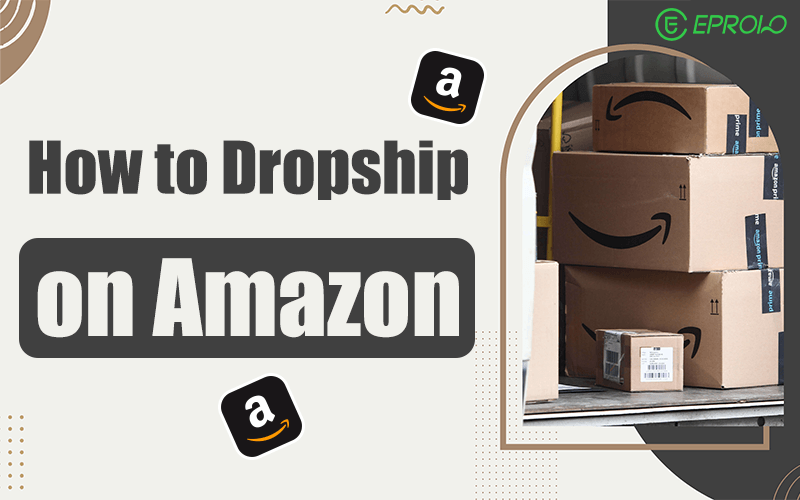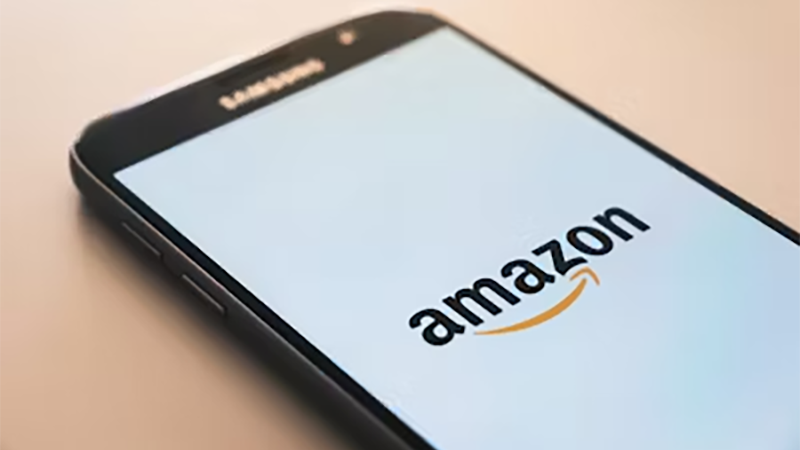You might be surprised by what you see when an Amazon seller conducts their business. At one moment they are relaxing with a cup of coffee, but soon they’re dealing with hundreds of orders without ever touching the products. They don’t need tape for boxes, labels for their shipments, or piles of stock taking up their rooms. It seems very easy. The reality is, they’re likely using dropshipping.
More and more people choose dropshipping because they can sell online without needing to store products, ship them, or pay large fees up front. Though it sounds easy, it can only work if you follow Amazon’s guidelines.
If you’ve been wondering how to dropship on Amazon in 2026, you’re not alone. Many people are quickly becoming interested in cryptocurrencies, yet the subject is still very confusing. The process is not straightforward, and the rules can seem confusing if you’re new to Amazon. For this reason, it’s more crucial than ever to get everything right from the start.
We’ll explain dropshipping simply and show you how it functions on Amazon, what’s allowed and what isn’t, and how you can avoid getting banned before you sell anything.

Page overview:
Understand Amazon Dropshipping’s Policy
Is Amazon Dropshipping Profitable?
How to Dropship on Amazon Step by Step
1. Sign Up for an Amazon Seller Account
3. Partner with Reliable Dropshipping Suppliers
4. Create an Amazon Product Listing
5. Promote Your Amazon Dropshipping Store
6. Manage Orders and Fulfillment
7. Provide Excellent Customer Service
Advantages and Disadvantages of Dropshipping on Amazon
How to Make Money Selling on Amazon Without Inventory
How to Dropship on Amazon Without Money
What is Dropshipping?
Think of dropshipping as selling things you don’t actually keep in stock. When someone places an order on your Amazon store, you forward that order to your supplier. They ship the product straight to the customer; your hands stay clean, literally.
Amazon dropshipping works the same way, but you have to follow Amazon’s strict rules. You can’t use random suppliers or fake shipping info. You must be the seller of record, and your name has to be on everything the customer sees.
People learning how to dropship on Amazon often ask, “So I don’t need inventory?” Exactly! And that’s the fun part.
Understand Amazon Dropshipping’s Policy
Before you dive into how to dropship on Amazon, there’s one thing you need to get straight: Amazon has rules, and they’re serious about them. If you break those rules, your account could be suspended faster than you can say “Prime shipping.”
First, you must be the seller of record. That means your name, not your supplier’s, needs to show up on everything, from the receipt to the return label. The customer should never feel like the product came from someone else.
Second, you can’t let your supplier slip their name into the box. That means no outside logos, no packing slips, and no invoices from another seller. It has to look like it came directly from your Amazon store.
Next, you’re still responsible for returns. Even if your supplier ships the product, you’re the one the customer deals with. So you’ll need a clear plan for handling returns and refunds fast.
Finally, you have to follow Amazon’s Business Solutions Agreement and stay within all of their selling policies. That’s part of playing on their platform and staying in the game.
Want to start dropshipping on Amazon the right way? Start by following these rules to the letter. It’s not optional. It’s required.
Is Amazon Dropshipping Legal?
Yes, Amazon dropshipping is legal. Amazon allows dropshipping in its marketplace, but it has a specific dropshipping policy to obey:
- You Must Be the Seller of Record: Your name or business name must appear on any package slips, invoices, or materials as the seller. This helps customers recognize you as the responsible party for these products.
- Handle customer service: Although your dropshipping suppliers handle inventory and shipping, you’re still responsible for handling customer service. This includes customer inquiries, returns, and complaints.
- Avoid shipping from other retailers: Amazon does not allow sourcing products from retailers like Walmart or AliExpress and shipping them to Amazon customers directly. This can violate Amazon dropshipping policy and result in a penalty like account suspension.
- Remove third-party information: Amazon requires sellers to remove any information that can let customers identify a different seller. Whether it’s a dropshipping supplier or 3PL managing your shipping, make sure to remove all their information from the package.
By following these rules, sellers can operate within Amazon’s dropshipping policies and avoid potential penalties.
Is Amazon Dropshipping Profitable?
Dropshipping on Amazon can be profitable, but success depends on several factors like product selection, supplier reliability, and pricing strategy.
A major advantage of dropshipping is the low startup cost. Since sellers don’t need to buy inventory in advance, it’s ideal for budget-conscious entrepreneurs. This flexibility also allows sellers to test different products without financial risk.
Choosing the right Amazon products is key to maximizing sales. Focus on products with high profit margins and low competition to increase sales.
Reliable suppliers are also important. A good supplier ensures product quality, fast delivery, and responsive support. This helps in reducing the risk of negative reviews and customer complaints.
Amazon’s extensive customer pool is another advantage, allowing sellers to reach millions of potential buyers without spending money for marketing. It also provides both individual and professional plan, giving flexibility for business of all size.
However, Amazon fee structures include various charges, such as referral fees and subscription costs. If you’re using FBA, you need to consider more. You need to strategically pricing your products to stay profitable in case complex pricing structure can eat into your profit.
Lastly, as more and more sellers enter Amazon, the competition can be fierce. To stand out, focus on niche products, write clear and engaging product descriptions, and provide excellent customer service.
Amazon dropshipping offers great potential, but success requires smart product choices, reliable suppliers, and careful planning.
Is Amazon Dropshipping Profitable?
Yes, Amazon dropshipping can be profitable, but it depends on how you run it. Some sellers make a few hundred bucks a month. Others clear thousands. What makes the difference? Smart product choices, solid suppliers, and knowing how to keep your costs low.
Amazon takes fees. Suppliers take a cut. So you’re working with smaller margins. That’s normal. The real profit comes from volume, selling steadily, and selling smart. You won’t be buying yachts, but you can build a solid income stream.
If you’re learning how to dropship on Amazon, know this: the profit’s real, but so is the work. You’ll need time, patience, and a good plan. No shortcuts. Just smart moves.
Many people ask how to start dropshipping on Amazon to make easy money. It can be simple, but it’s not lazy. Treat it like a real business, and you’ll see real results. Keep it clean, follow the rules, and focus on long-term wins.
How to Dropship on Amazon Step by Step
Starting something new always feels a little overwhelming at first, but this part? You’re just building the foundation. If you want to learn how to dropship on Amazon and actually make it work, doing each step right from the start can save you a lot of headaches later. Here’s how to set yourself up the smart way.
1. Sign Up for an Amazon Seller Account
Before you do anything else, you need an Amazon seller account. This is where everything starts. You’ll have two choices: Individual or Professional.
If you plan to sell fewer than 40 items per month, the Individual plan is fine. Amazon charges a small fee per sale, no monthly cost. But if you’re serious about building a real store and want access to more features, go with the Professional plan. It’s about $39.99 per month and worth it for anyone learning how to start dropshipping on Amazon with long-term goals.
To register, head to Amazon Seller Central and create an account. You’ll need basic info: your name, business address, phone number, tax info, and a credit card. Once you’re set up, you can access your dashboard and begin building your product listings.
2. Pick a Dropshipping Niche
Picking your niche is not just selling things, but about choosing the right things to sell. You want to sell goods that earn you good profits, are popular and do not cause many customer complaints.
You should first check for products that are less competitive and have constant demand. Stay away from gadgets that are trendy now but won’t last long or are hard to maintain. Consider selling things that people can use such as home goods, pet supplies or exercise equipment, then narrow down your niche.
If you’re not sure how to begin, consider using tools that simplify product research.
- Amazon Best Sellers helps you understand what’s currently selling well on Amazon. You can see exactly what people are purchasing right now.
- Product research tools like Helium 10 can dig deeper into a product’s data for a fee. The search patterns in the market and how competitors are performing.
- Google Trends helps you see if more or fewer people are interested in a product. You can use it without paying anything and it’s very simple.
Selecting your niche at the beginning can really help your business grow. Instead of looking for a fast win, invest your time in a product with lasting demand for dropshipping on Amazon. Be smart about your choices and sales will come your way.
3. Partner with Reliable Dropshipping Suppliers
If you want your Amazon store to run smoothly, choosing the right supplier is a big deal. You’re trusting them to ship your products on time, handle inventory properly, and help keep your customers happy. When you’re learning how to dropship on Amazon, this step can make or break your success.
Look for Amazon dropshipping suppliers with fast shipping, consistent stock, and good customer service. They should give tracking numbers, have a clear return policy, and communicate quickly. It also helps if they let you add your branding or packaging; it makes your store feel more official and helps build trust with customers.
EPROLO: Best Amazon Dropshipping Supplier
EPROLO stands out as a leading dropshipping solution for several reasons. First, their product variety is huge—everything from fashion to home goods. They also maintain strict product quality control, ensuring you get reliable items that meet customer expectations.
With 26+ global warehouses, including the USA, UK, Europe, and China, you get faster delivery and fewer complaints. For Amazon sellers, EPROLO supports both FBA (Fulfilled by Amazon) and FBM (Fulfilled by Merchant), so you stay fully compliant with Amazon’s rules.
The best part? EPROLO lets you customize your brand—add your logo, create branded packaging, and more. Their branding service makes it easy to build a solid, professional presence.
Lastly, to simplify the dropshipping process, just use EPROLO’s built-in integration. It only takes a few steps to sync your products and start selling.

Other Popular Amazon Dropshipping Suppliers
- AliExpress – Tons of product options, but shipping can be slow unless you filter by U.S. warehouses.
- Zendrop – Great for faster shipping and better packaging than AliExpress.
- SaleHoo – A paid directory with vetted suppliers for more control and reliability.
- DHGate – Focuses on bulk deals and is often used by experienced sellers.
- Banggood – Known for tech and gadgets, with warehouses in the U.S., Europe, and China.
If you’re serious about how to start dropshipping on Amazon, work only with reliable suppliers you trust. Bad shipping = bad customer reviews = bad news for your store.
4. Create an Amazon Product Listing
Once you’ve picked your products and set up your supplier, it’s time to create a listing that actually gets people to buy. Think of this as your product’s ad: clear, helpful, and easy to trust.
Start with a good title. It should include the product name, brand (if you have one), and a few key features. Don’t overstuff it with keywords; just make it useful.
Your images matter a lot. Use high-quality photos that show the product from different angles and make sure they meet Amazon’s size and style rules.
In the bullet points, list the main features and benefits. Keep them short and clear. Then write a short description that gives shoppers a quick idea of why they should choose your product.
Finally, choose the right product category and keywords. This helps people actually find your listing.
When you’re learning how to dropship on Amazon, this step can seem boring, but it’s what turns clicks into sales.
5. Promote Your Amazon Dropshipping Store
Once your products are live, you’ll need to get people to actually see them. Promoting your Amazon store is where things get exciting, and maybe a little noisy.
- Start with Amazon PPC. These are ads that appear right in Amazon search results. You choose a few keywords, set a budget, and let Amazon bring in traffic. Even with a small spend, it can make a big difference in visibility.
- Next, optimize your listing. Good titles, bullet points, and strong photos aren’t just for looks; they help Amazon understand what you’re selling and show it to more people.
- Don’t stop at Amazon. Share your listings on your social media pages. TikTok, Instagram, and even Pinterest work great for product posts. The more places your product shows up, the more chances people will see it and buy it.
- Team up with influencers. You don’t need big names. Micro-influencers with small but active followers can bring in more targeted traffic at a lower cost. Offer them a free product or small payment in exchange for a shoutout or short review.
If you’re serious about how to start a dropshipping business on Amazon, you need to think like a marketer. You can have the best product out there, but if nobody sees it, you won’t sell a thing.
6. Manage Orders and Fulfillment
Once you begin to receive orders, your attention should turn to how everything is managed internally. When you’re learning how to dropship on Amazon, this step is where you’ll really feel like a business owner, minus the warehouse.
Your choices are manual or automated fulfillment.
With manual, you enter the order on your supplier’s website, fill in shipping details, and hit confirm every time a customer buys. It may seem helpful while you’re new, but it can soon become very tiring. Imagine making these 20 times a day. No, thanks.
That’s where automation comes in and makes things easier.
EPROLO makes it much simpler to build and manage your own online store. If someone buys something on Amazon, EPROLO receives the order and completes the necessary info, and initiates shipping. There’s nothing you need to click. It monitors every part of the process, so you’re always aware of everything.
Even better? With everything on one screen, you are able to manage shipping schedules, update tracking numbers, and address returns. There are no messy spreadsheets, and you won’t have to worry about orders at the last minute.
If you’re serious about how to do dropshipping on Amazon and want to scale, automation is the way forward. Let technology take care of the details so you can concentrate on expanding your store.

7. Provide Excellent Customer Service
Customer service is what keeps your store running long-term. People won’t remember your product name, but they’ll remember how you made them feel.
Start by replying to messages fast. Amazon tracks response time, and slow replies can hurt your seller rating. Even if you don’t have a full answer yet, a simple “I’m checking on that for you” goes a long way.
Next, be clear with tracking info. If something’s delayed, let the customer know before they have to ask. People appreciate honesty more than silence.
If there’s a return or complaint, fix it without getting defensive. Refunds may sting a little, but bad reviews sting longer.
Want to know how to start dropshipping on Amazon and keep it going strong? Make your buyers feel like they matter. Treat them well, and they’ll come back, or even better, leave a glowing review.
Advantages and Disadvantages of Dropshipping on Amazon
Every dropshipper dreams of getting products in front of eager buyers without paying for ads or holding piles of inventory. That’s part of the appeal when learning how to dropship on Amazon. But while the opportunity is real, there are also limits you need to know. Here’s a closer look at the pros and cons.
Advantages
- Free traffic from Amazon: Amazon has millions of shoppers looking to buy. Once your product is listed, it can show up in front of real customers without needing to run outside ads.
- Low startup costs: You don’t need a big budget to begin. Since you’re not buying dropshipping products upfront, you only pay for what actually sells.
- Easy to scale: As orders grow, you can easily add new products and suppliers. With automation tools and suppliers like EPROLO, you can handle more without much extra work.
- Built-in trust: Customers trust Amazon. When they see your product on the platform, that trust carries over, making it easier to convert clicks into sales.
- Sell across the globe: Amazon lets you reach buyers in other countries. It’s a simple way to grow your store beyond just local customers.
Disadvantages
- Limited control over branding: You can’t fully customize the shopping experience. Your product pages look like Amazon’s, not your own store.
- Tough competition: Many sellers list similar products, often with lower prices. You’ll need to stand out with better listings, service, or unique items.
- Strict rules: Amazon has detailed policies. If you make a mistake, like late shipping or mislabeling, you could face account suspensions or bans.
How to Make Money Selling on Amazon Without Inventory
Want to earn on Amazon without renting storage or packing boxes every day? You’re not alone. A lot of smart sellers have figured out how to profit without touching a single product. If you’re wondering how to make this work, here’s a breakdown of real ways to earn, even with zero stock in your closet.
Dropshipping
Dropshipping is a go-to choice for beginners. You don’t keep products. When a customer orders, your supplier ships it directly. You focus on the listings, pricing, and customer satisfaction. Learning how to dropship on Amazon can be a great first step to start earning fast with very little upfront cost.
Print-on-Demand
This method is perfect for creatives. You design items like T-shirts, mugs, or phone cases. When someone buys, your print-on-demand partner prints and ships the item. No bulk orders or inventory needed; just good designs and a store.
Fulfillment By Amazon (FBA)
FBA isn’t fully inventory-free, but it removes a lot of the work. You send products to Amazon’s fulfillment centers, and they handle shipping, returns, and even customer service. You still need to source items upfront, but you won’t pack or ship anything yourself.
Selling Digital Products
Digital goods, like eBooks, templates, or guides, can be listed on Amazon and delivered instantly after purchase. Once your digital product is uploaded, it runs on autopilot. Great for passive income.

Affiliate Marketing
You don’t sell anything directly. Instead, you recommend products using your Amazon affiliate link (via blogs, YouTube, etc.). When people click and buy, you earn a small commission.
Each of these options can earn you money. If you want to get started today, learning how to do dropshipping on Amazon is one of the easiest and cheapest ways to test the waters.
How to Dropship on Amazon Without Money
Starting a business usually means spending cash upfront, but learning how to dropship on Amazon doesn’t have to drain your wallet. If you’re working with zero dollars, you can still take smart steps to build your store; just be ready to put in a bit more time and effort.
First, open an individual seller account on Amazon. It’s free to register, and you’ll only pay a small fee when something sells. Skip the professional plan for now; upgrade later once you’re seeing sales.
Next, you’ll want to find dropshipping products that people actually want to buy. You can use free product research tools like Amazon Best Sellers and Google Trends. These help you spot what’s trending without paying for fancy software.
To make things easier, partner with platforms like EPROLO. It’s free to use and gives you access to thousands of dropshipping products. It also lets you automate your orders and shipping. That means when someone buys from you, EPROLO handles the hard stuff.
Since your budget is tight, skip paid ads for now. Focus on organic marketing; post your listings on TikTok, Instagram, Facebook groups, or anywhere your buyers hang out. Ask friends to share your links. Every bit helps.
You can also do customer service yourself to save money. Be fast, friendly, and helpful; it builds trust and keeps people coming back.
If you want to know how to start a dropshipping business on Amazon with no money, this is your path. Be creative, stay active, and focus on building up slowly. Once the sales come in, you’ll have room to grow.
5 Tips for Amazon Dropshipping Success
Dropshipping on Amazon can work really well, but success doesn’t happen by accident. Whether you’re learning how to dropship on Amazon or you’ve already started building your store, here are a few tips to keep you on track.
1. Test Various Products for Optimal Results
No one hits a home run with their first product every time. Some items may flop; others may surprise you. The trick is to test a range of products early on. Don’t overthink it; start with a few different listings and watch what gets the most clicks, sales, and reviews. Focus on products with low competition, fast shipping, and consistent demand.
You can find ideas using the EPROLO catalog, Amazon’s Best Sellers page, Google Trends, or Helium 10. These tools show what’s trending, so you’re not just guessing. Keep rotating out low-performing products and doubling down on the ones that sell.
2. Check Authorization for Branded Products
Branded items might seem like an easy way to attract buyers, but Amazon takes them seriously. Many brands require sellers to show authorization or invoices. Without these, your listing could be removed, or worse, your account could be suspended.
Before listing any branded product, research the brand’s Amazon policy. If they require approval, don’t skip it. A safer move is to focus on unbranded or private-label products until you’re more experienced. This helps you avoid red flags and keeps your store running smoothly.
3. Bundle Products for More Sales
Bundling is a smart move if you want to raise the value of your listings. When you combine a few related items, like a yoga mat with a towel and water bottle, you create more value for the customer. They feel like they’re getting a better deal, and you make a bit more from each sale.
You don’t need to go overboard. Just think about what your buyers might need together and group it in a single offer. Make sure your bundles are clearly explained in the title and product description so shoppers know exactly what’s included.
4. Automate Amazon Dropshipping Store
Running everything manually gets messy fast. When your orders grow, it’s hard to keep up. That’s where automation makes a big difference. With EPROLO’s automation features, you can automate the order and shipping process.
5. Calculate Your Margins to Turn a Profit
One of the most important things is knowing how much you actually make on each sale. Don’t guess. Take the product cost, Amazon fees, shipping, taxes, and anything else that applies. Then subtract that from your selling price. Those are your profit margins.

Conclusion
Learning how to dropship on Amazon is a smart way to start selling without needing a warehouse or spending a lot upfront. Starting doesn’t require expensive equipment or lots of people. A good supplier, a basic strategy, and some patience will help you turn this into a business.
To succeed, you need to be regular, notice what’s effective, and adapt as needed. Anyone willing to put in the effort can learn how to start dropshipping on Amazon and grow it into something real.
FAQs
1. Is Amazon dropshipping legal?
Yes, dropshipping on Amazon is allowed, as long as you follow their rules. You must always be the seller of record, and you can’t send products that show another seller’s info or branding (like from Walmart or eBay).
2. How much does it cost to dropship on Amazon?
To start, Amazon charges $0.99 per sale for individual sellers or $39.99/month for a professional account. You’ll also need to pay referral fees (usually 8–15%) and cover product and shipping costs. It’s pretty affordable compared to other business models.
3. Can I dropship on Amazon for free?
You can start with little to no money by using a free Amazon individual seller account and a supplier like EPROLO that doesn’t charge upfront. You’ll still need to pay when you get sales, but you don’t have to invest much upfront.
4. How to dropship on Amazon with Shopify?
To do this, you need to connect your Shopify store to Amazon. From there, you can list products on Amazon using your Shopify inventory and manage everything from one place. Some tools like EPROLO or DSers help make the setup smoother.







